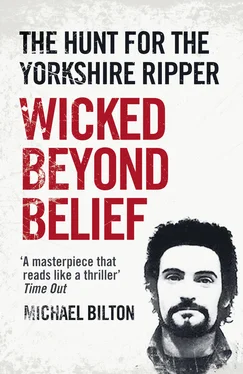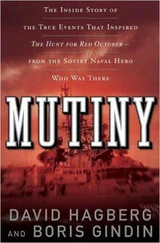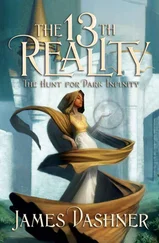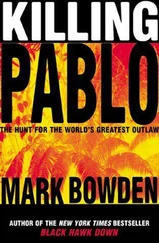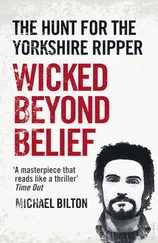As a twenty-year-old seaman he saw enemy action aboard HMS Albatross, a much-overhauled former Australian seaplane carrier. In May 1944, she set sail from Devonport and headed up the English Channel in a convoy towards the Goodwin Sands. In darkness, at four o’clock in the morning on the 23rd, she ran aground. ‘We were high and dry,’ Phil Mortimer, then a nineteen-year-old telegraphist from Poole, remembers. ‘It was dark and I think we lost our way. We had to wait for the tide to turn. We came under attack from German shore batteries at Cap Gris Nez. You could see them flashing as they fired, and then the shells landed, splashing in the water around us. It was pretty nerve wracking.’
Two weeks later, the 6,000-ton vessel was positioned off SWORD beach during the D-Day landings on the Normandy coast around Ouistreham. The Albatross had been converted specially for the invasion of France into a repair ship for landing craft. Its cranes could hoist the flat-bottomed boats out of the water so engineers could work on them. She was armed with anti-aircraft and machine guns.
Twice in late June she was hit by shellfire from German coastal batteries, which penetrated the upper deck, though the damage was superficial. Eventually she came under torpedo attack on 11 August, off Courselles, and suffered sixty-nine dead and many seriously injured, at about 6.30 in the morning. The torpedo struck in the forward mess-deck on the port side. Phil Mortimer recalls how the Albatross immediately keeled over to one side. There was a general power failure and the lights went out. In shallow water the surviving crew members managed to shore up the damage. She made her way heavily down in the water to the safety of Portsmouth Harbour, listing badly and towed stern-first by a Dutch tug, with an escort from the minesweeper HMS Acacia. On this difficult journey some twenty of those killed were lashed in their hammocks and buried at sea. Those crew members who were able were mustered aft to witness the skipper reading the prayer to the dead.
In dry dock in the minesweeping section of the naval base the water was pumped out of the Albatross. Another fifty dead lay below decks, most still in their hammocks. Members of HMS Acacia’s crew were among those detailed to go below and retrieve the bodies. They included a nineteen-year-old steward/cook from Blackpool, Frank Roberts. ‘Retrieving the trapped bodies was a really gruesome task,’ he remembered. ‘We were given a mask and a tot of rum and told to get on with it. Some of the dead we found stuck in the portholes as they tried to escape. There was a hole in the side of the ship the size of a bus. We wrapped up those still in their hammocks and brought them out. It was very traumatic and of course we had no such thing as counselling in those days.’ The bodies were then transferred to a landing craft and buried at sea off Chichester. Immediately afterwards George Oldfield was sent home on sick leave to Yorkshire, where he remained for six months with a stress-related illness.
In 1946, after demob from the Navy as a petty officer, he arrived back in Cawood as one of thousands of reasonably educated young men throughout Britain wondering what to do with the rest of their lives. The local village policeman recommended a career in the police, and Oldfield joined the West Riding force the following year. It would, he assured his family, provide him with a good steady job and a pension. It was time to get on with life and forget the awful carnage he had witnessed.
Oldfield was to become living proof that it was possible in Britain gradually to rise from humble origins via a meritocratic police service to hold an important position within the local community. Like Dennis Hoban in Leeds, he spent virtually all his career in the CID gradually rising through the ranks. Unlike Hoban, his postings were far and wide, from one end of the West Riding to the other. Harrogate for one job, Barnsley for another. By 1962 he was a detective chief inspector at Dewsbury. Two years later, he returned briefly to uniform at Keighley before being transferred to the CID staff at the Wakefield headquarters as a detective superintendent and deputy head of CID for the whole of the West Riding. In 1971 he went back into uniform as a chief superintendent for two years. Then, in 1973, he returned to West Yorkshire CID as its head, taking the place of Donald Craig, who had become an assistant chief constable. When the major amalgamation with Leeds and Bradford took place in 1974, Donald Craig held the top job in overall charge of CID. Oldfield was his deputy.
Generally he got on well with his senior colleagues. However, he did have longstanding problems with some senior detectives from the Leeds and Bradford force after amalgamation. Some of the city detectives had no time for Oldfield, nor did he for them. A great deal of the mutual distrust had its origins in an official inquiry Oldfield conducted during the mid-1960s into corruption among some city detectives in Leeds. Called in to investigate as a senior officer from outside Leeds, he was utterly ruthless during this inquiry, often undertaking forceful interrogations in an effort to get to the truth. He had the homes of suspected officers put under intense surveillance, then had their homes searched, and thus put pressure on them through their families.
‘The allegations involved taking backhanders from villains, taking things from people. We are talking about detectives,’ said one officer, familiar with the inquiry at the time. ‘Some of the Leeds lads on the Crime Squad were interviewed and they thought they had had a hard time, that they were treated like villains.’ In short, Oldfield did as he was supposed to do: his investigation was run on the lines of an inquiry into criminal behaviour. But the result was an abiding resentment amongst some officers that he had damaged officers’ careers unjustifiably.
Much of Oldfield’s effort during the corruption inquiry had centred on Brotherton House in Leeds, the City Police HQ and also the home of the local Regional Crime Squad in which some of the suspected officers had served. During the Christmas festivities that year, Oldfield was invited by the local RCS boss to their annual dinner. ‘He [the RCS boss] made a tactical bloomer,’ said one of those present. ‘It was a stupid thing to do because you do not invite someone who is conducting an outside inquiry of that sort to a Christmas dinner. George also made a bloomer in that he came to the dinner … when he came in we all walked out and went to another bar to have a drink. We had arranged that if he turned up, we’d leave as a protest. We left him with the boss.’
The same detective, who was seconded to the RCS, felt no personal animosity to Oldfield. Later he came to realize what Oldfield was up against when he returned to his home force and was subsequently himself asked to conduct an inquiry into a corrupt Leeds officer. ‘It concerned several thousand pounds worth of missing metal and an investigation that went bad,’ he said. ‘This officer tipped off the thieves. He didn’t take money for it, he was crafty enough to have gone on a foreign holiday with his wife and kids, paid for by the criminals.’
Oldfield was by nature a private man and remained very much an enigma. He virtually cultivated the image. Few of his colleagues got really close to him over the years. He and his wife Margaret, his longstanding friend from Cawood, had married in 1954. He was thirty, she twenty-six. Tragedy came seven years later when their six-year-old first born, Judith, developed leukaemia. The doctors told Oldfield that their little girl had just six months to live. Unable to give Margaret such heartbreaking news, he told his wife their daughter would live for another year. In the end she did survive another twelve months. It was a heart-aching period in both their lives. His wife saw Oldfield develop a nervous affliction as a result of the child’s death: a twitch in his shoulder, which never left him.
Читать дальше
